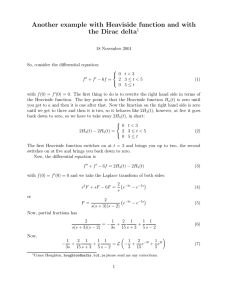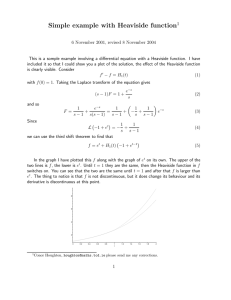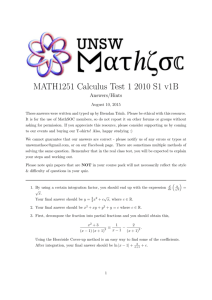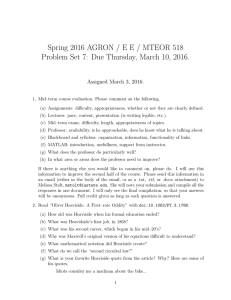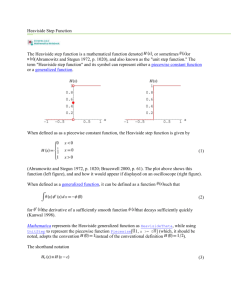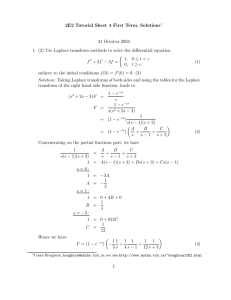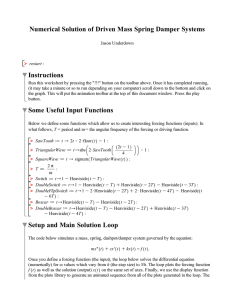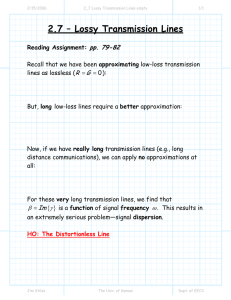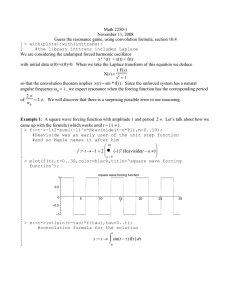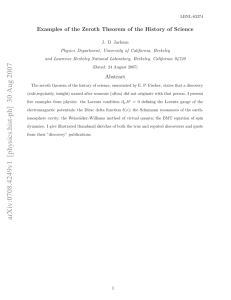Another example with Heaviside function and with the Dirac delta
advertisement
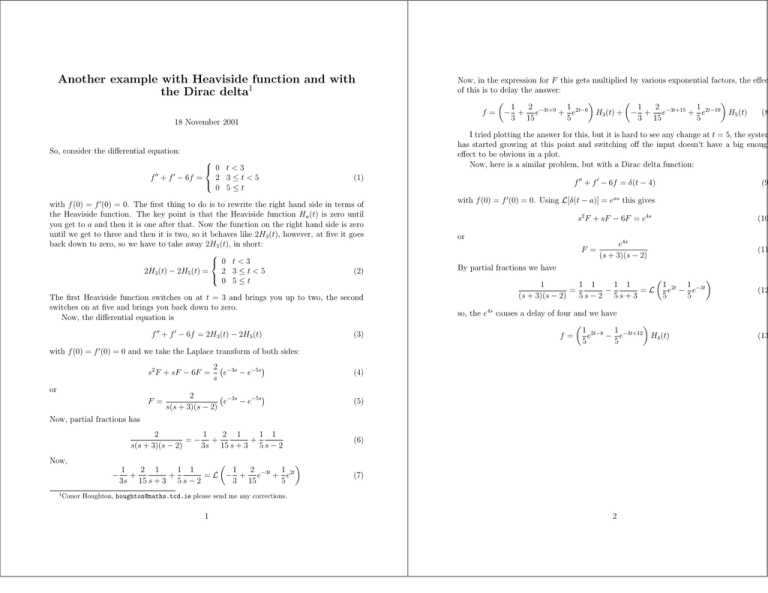
Another example with Heaviside function and with the Dirac delta1 18 November 2001 I tried plotting the answer for this, but it is hard to see any change at t = 5, the system has started growing at this point and switching off the input doesn’t have a big enough effect to be obvious in a plot. Now, here is a similar problem, but with a Dirac delta function: So, consider the differential equation: 0 t<3 2 3≤t<5 f + f − 6f = 0 5≤t 00 0 (1) with f (0) = f 0 (0) = 0. The first thing to do is to rewrite the right hand side in terms of the Heaviside function. The key point is that the Heaviside function Ha (t) is zero until you get to a and then it is one after that. Now the function on the right hand side is zero until we get to three and then it is two, so it behaves like 2H3 (t), however, at five it goes back down to zero, so we have to take away 2H5 (t), in short: 0 t<3 2 3≤t<5 2H3 (t) − 2H5 (t) = (2) 0 5≤t The first Heaviside function switches on at t = 3 and brings you up to two, the second switches on at five and brings you back down to zero. Now, the differential equation is f 00 + f 0 − 6f = 2H3 (t) − 2H5 (t) Now, in the expression for F this gets multiplied by various exponential factors, the effec of this is to delay the answer: 1 2 2 1 1 1 f = − + e−3t+9 + e2t−6 H3 (t) + − + e−3t+15 + e2t−10 H5 (t) (8 3 15 5 3 15 5 (3) f 00 + f 0 − 6f = δ(t − 4) with f (0) = f 0 (0) = 0. Using L[δ(t − a)] = eas this gives s2 F + sF − 6F = e4s or F = (4) or F = 2 e−3s − e−5s s(s + 3)(s − 2) (5) Now, partial fractions has 2 1 2 1 1 1 =− + + s(s + 3)(s − 2) 3s 15 s + 3 5 s − 2 1 1 1 1 1 = − =L (s + 3)(s − 2) 5s−2 5s+3 1 2 1 1 1 1 2 1 1 + + = L − + e−3t + e2t 3s 15 s + 3 5 s − 2 3 15 5 (6) (7) Conor Houghton, houghton@maths.tcd.ie please send me any corrections. 1 1 2t 1 −3t e − e 5 5 so, the e4s causes a delay of four and we have 1 2t−8 1 −3t+12 H4 (t) e − e f= 5 5 Now, − (11 By partial fractions we have with f (0) = f (0) = 0 and we take the Laplace transform of both sides: 2 −3s e − e−5s s (10 e4s (s + 3)(s − 2) 0 s2 F + sF − 6F = (9 2 (12 (13
